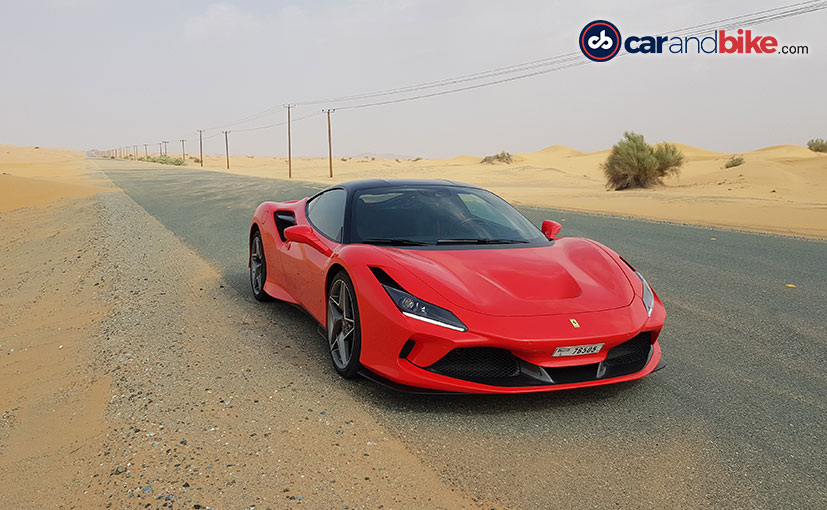Why Is Ferrari Not A Part Of FCA & PSAs Newly Formed Company Stellantis
Highlights
- Ferrari was seperated from FCA as a standalone brand in 2016
- Industry experts believe Ferrari holds much higher value as seperate unit
- Stellantis is planning to launch 39 electrified cars by the end of 2021
Fiat Chrysler Automobiles (FCA) and Peugeot's parent company, Groupe PSA, recently announced completing their 50:50 merger, forming a new company - Stellantis. The merger makes Stellantis one of the biggest automakers in the world with 15 brands under its umbrella. From FCA's side, the brands include Abarth, Alfa Romeo, Chrysler, Dodge, Fiat, Fiat Professional, Jeep, Lancia, Ram and Maserati. And on PSA's side, it'll be Peugeot, Citroen, DS, Opel and Vauxhall. However, the Italian sports car marque Ferrari is not part of the newly formed company and we tell you why.
Also Read: FCA And PSA Merger Officially Complete; Stellantis Appoints Carlos Taveras As Its New CEO
Now, it is true that for the longest time Ferrari was a part of Fiat Chrysler Automobiles. It was back in 1969 that Fiat S.p.A. acquired 50 per cent of Ferrari, and by 1988, the company expanded its stake to 90 per cent. However, much later, in October 2014, FCA showed intentions to separate Ferrari S.p.A. from under its umbrella and began the restructuring process a year later, in October 2015. This led to the formation of Ferrari N.V., a holding company of the Ferrari Group, which was incorporated in the Netherlands, which was completed in 2016.

FCA held 90 per cent stakes in Ferrari by 1988, however in 2014 it showed intentions to separate it and by 2016 Ferrari became a public company
FCA sold 10 per cent of the shares in an IPO and concurrent listing of common shares on the New York Stock Exchange, whereas the remaining 80 per cent of shares were distributed among FCA shareholders. The remaining 10 per cent of Ferrari was and continues to be owned by Piero Ferrari, the son of the company's founder, Enzo Ferrari. Currently, a majority of shares in Ferrari are publicly owned, which stands at 67.09 per cent, 22.91 per cent is owned by Exor N.V. the holding company of FCA, and 10 per cent is owned by Piero Ferrari.
Also Read: Former Ferrari CEO Luca Di Montezemolo Open To Return To Replace Camilleri

Auto Industry Expert Arun Malhotra says Ferrari is a niche brand that holds much higher value as a standalone entity
At the same time, we also must understand that Ferrari holds a much higher value as a standalone brand. And by keeping it that way, the shareholders will be able to maintain the higher value as opposed to making it a part of a larger conglomerate like Stellantis.
Explaining that aspect, Arun Malhotra Former MD Nissan India and Auto Industry Expert said, "There are two things I can say about this. One, Ferrari is a separate brand in itself, which has got a high intrinsic value. When you add too much into the merger, you are locking (the) value, you will be able to unlock more value if you keep it out. And second, the merger is happening with a similar type of technology and products. Ferrari's technology, product (and) profile, is in no way related. There's no relationship with the two merged companies, in terms of their product profiles, in terms of their marketing strategies; it's a very niche brand."
Also Read: After Long Journey, Fiat Chrysler And PSA Seal Merger To Become Stellantis

Stellantis says it will now focus on potential markets like - China, Africa, the Middle East, Oceania and India
As for Stellantis, which will be headed by FCA's Carlos Tavares as its Chief Executive Officer, currently covers the full spectrum of the automotive segment. Right from luxury, premium and mainstream passenger vehicles to hard-charging pickup trucks, SUVs and light commercial vehicles, as well as dedicated mobility, finance and parts and service brands, everything is under one brand. The company says it already has a well-established presence in three regions - Europe, North America and Latin America, and will now focus on potential markets like - China, Africa, the Middle East, Oceania and India. It expects to leverage its size and economies of scale as an enabler to invest in innovative mobility and is targeting annual synergies of more than 5 billion Euros at a steady state. Furthermore, it aims to launch 39 electrified vehicles by the end of 2021.
Last Updated on January 20, 2021




















